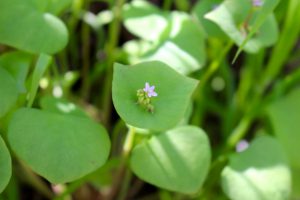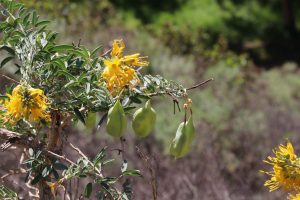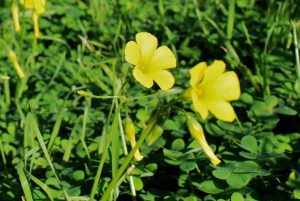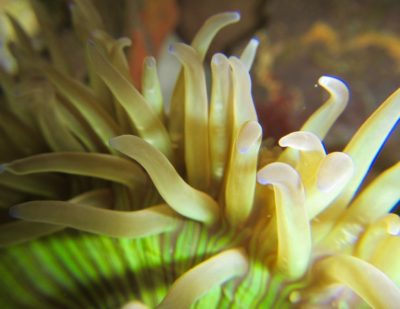
Catalina is already in full bloom with new growth. Each week brings more flowers, grasses, and shrubs to the hillsides, making every hike a treasure hunt of new plants to discover. With the right knowledge base, a hike on Catalina can become a culinary exploration of many of California’s edible plants. Some of these plants can be eaten as a snack on the trail; others might be prepared as part of an evening meal; all are delicious. Here are some of the more common edible plants found around Catalina:

Miner’s Lettuce (Claytonia perfoliata): Miner’s Lettuce is a California native and is found in many moist, shaded areas on the island. Its leaves are edible and can be eaten sauteed or raw, like spinach. During the California gold rush, the lettuce served as an important source of vitamin C for miners who wished to stave off scurvy.

Blue Dicks (Dichelostemma capitatum): Blue Dicks, or Wild Hyacinth, is a perennial herb that is native to Southern California and much of the Southwest. While the bluish-purple flowers are not known to be edible, the Blue Dicks’ corm, a swollen underground stem that provides the plant with water and nutrients, has historically been harvested by indigenous peoples of the Southwest. The corms can be eaten boiled or roasted, and they served as a hearty source of starch in the diets of many Native Americans.

Bladder Pod (Isomeris arborea): Bladder pod is a native shrub and a member of the mustard family. Both its flowers and large seed pods are edible, but they have a very strong flavor when eaten raw. When cooked, the plant takes on a mild, sweet flavor. Native southern Californian and Mexican tribes often mixed the flowers and seeds with onions and served them on top a tortilla.

Bermuda Buttercup (Oxalis pes-caprae): Bermuda Buttercup, otherwise known as sourgrass, is a yellow flower that is invasive to Catalina. The leaves, stem, flowers, seeds, and roots are all edible, but don’t make it a mealtime staple! Oxalic acid gives the plant a tart flavor that is perfect for a refreshing, mid-hike snack, but it can be toxic in high quantities.


